The Snow Monkey Park is probably the most popular attraction in the mountainous region of Japan – Nagano prefecture. Wild monkeys in hot springs – that’s what makes it so special!
While planning my Nagano winter trip I was sceptical about visiting the Snow Monkey Park. At first I thought that the park had been established as a tourist attraction. As I don’t like monkeys and avoid animal tourist attractions at all costs, I wasn’t sure if I would like it. And you know what? I love it!
What's in this blog post?
Monkeys in Betiful World
Not a monkey fan
I’ve never been a monkey fan. Ok, not all monkeys but macaques in particular. In short, since I got to know them a little bit more through my travels, I stopped trusting any monkeys. They are sneaky little bastards. If you visited South East Asia, you know what I mean. And if not, I will explain.
While visiting Monkey Forest in Bali, I saw a monkey pulling out car keys from a young man’s pocket and running away. Not sure if the man got his keys back and how he got home. In the same place, but on a different occasion, a monkey jumped on my friend’s head (!) poking his long, ugly fingers in his ear. Also in Bali, in the Uluwatu temple monkeys were very aggressive. As I was walking, one jumped on my foot (!) trying to pull my flip flop off and it did it twice! It was when I realized why my beloved Havaianas flip flops are quite expensive – it’s because they are monkey attack-resistant! 🙂
In Batu Caves, Malaysia, a little “sweet” monkey stole glasses from an old man’s nose in front of my eyes. Regular glasses, not sunglasses! Poor man .. Moreover, in Bako National Park in Borneo, another sly monkey stole a packet of potato chips from me. You should see my surprised face. I sat on the bench and took a snack from my backpack. I was ready to open it and boom…! The monkey appeared out of nowhere at the speed of light, took the precious potato chips from my hand and disappeared into the jungle forever. Lastly, this was also where another monkey jumped on my friend’s chest trying to steal her bag.
Snow monkeys’ life lessons
I thought I had enough reasons to avoid the monkey’s company. It seemed obvious to me – macaques and me would never be friends again. This lasted until I met monkeys in Japan, who not only changed the way I think of the macaques, but also reminded me of two important life lessons.
Firstly, as with everything in life, never say never. Life has a funny way to prove us wrong. Secondly, do not generalize. Don’t do it even with the monkeys.
Not all them are the same. Not all the macaques are evil. Some are probably just too stressed, I guess.
To change my mind about macaques I needed to travel to Nagano prefecture, to the Snow Monkey Park. Here the monkeys bathe in the natural hot springs and behave very well. Why are they so well-mannered? Well, I think it’s a combination of two main factors. Firstly, onsens – the Japanese hot springs, have been known for centuries for relaxation and healing properties. Indeed, monkeys are so relaxed here that they do not care about noisy humans around. Secondly, don’t forget we are in Japan and these are the Japanese macaques. Being a Japanese, even if you are only a monkey, requires you to be polite, kind and respectful. 🙂
Let me tell you about the story of this incredible place a bit more.
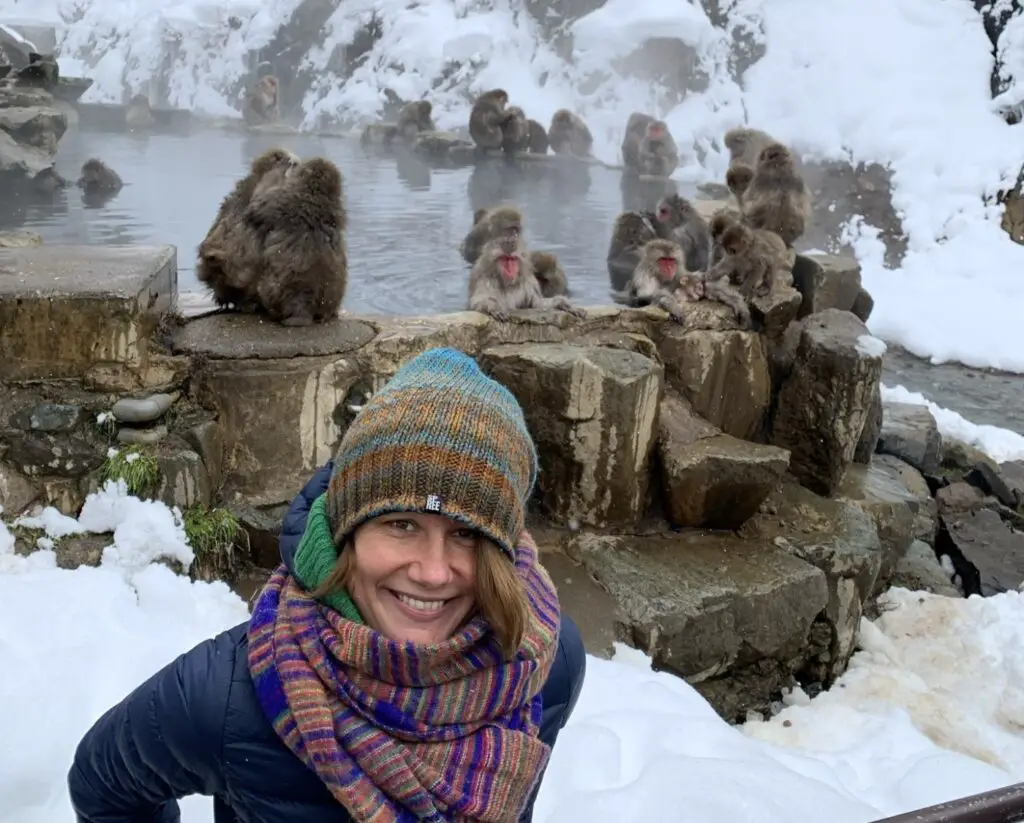
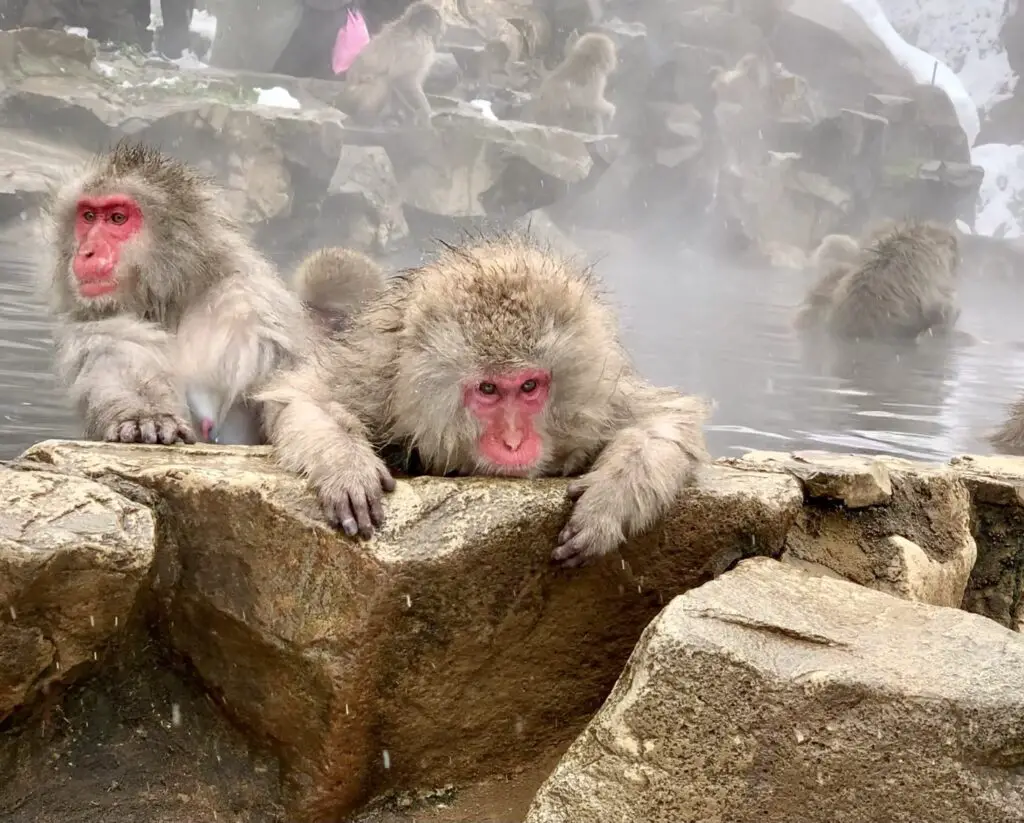
Why is the Snow Monkey Park so special?
Unusual beginning
The story of this place is quite unusual. In the close vicinity of the famous hot springs frequented nowadays by the macaques, on the opposite side of the river lies the historic inn Korakukan established in 1864. The Korakukan’s outdoor bath beside the river has been the first place in the world where wild monkeys got into the hot spring long before the Snow Monkey Park was opened. As per the information available in the park: “young monkeys played in Korakukan’s baths and to discourage this behavior the park officials decided to entice them away from the inn with the private bath on their own. Over the years, the monkeys living in the area developed their own bathing culture”.
It was smart monkeys themselves who discovered the hot springs pleasure, which became a popular tourist attraction only many years after.
I love this story! The fame of the park went global only in 1970, when a snow covered monkey soaking in a spa photo appeared in the LIFE magazine’s front cover.
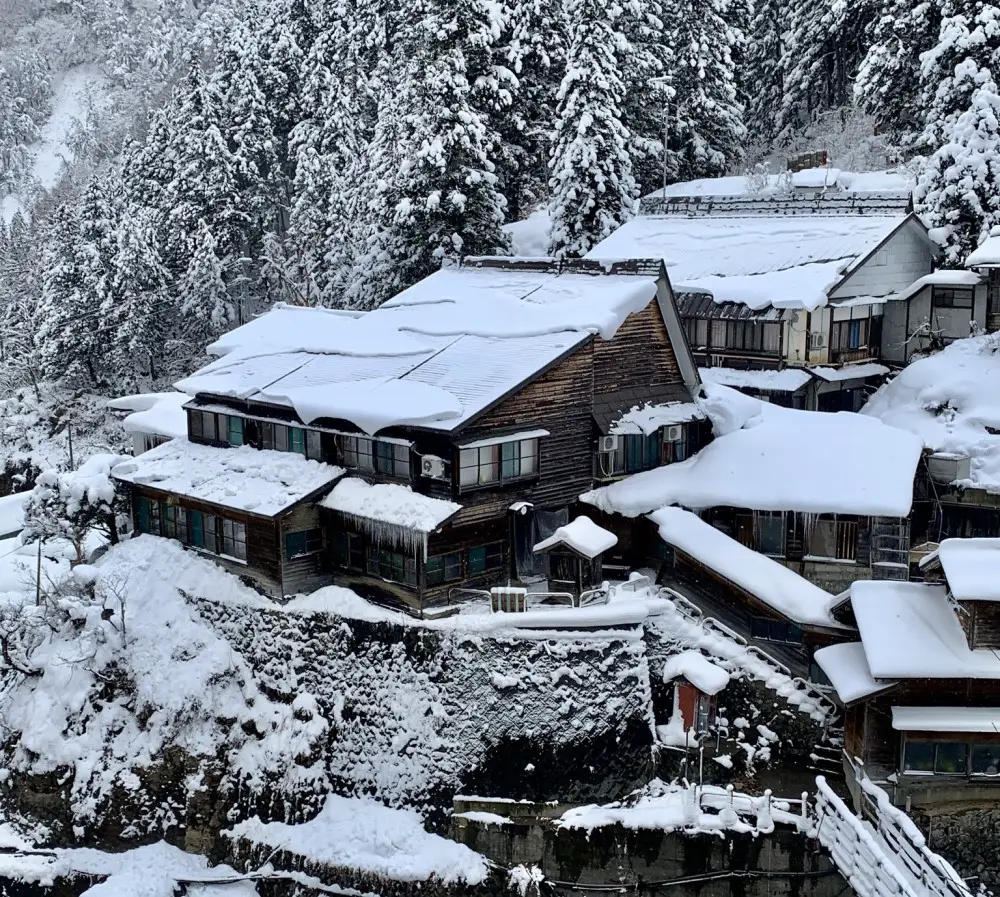
The monkeys are wild and free
Currently, park staff feed the monkeys daily to keep them safe around the park. As explained on the official website of Snow Monkey Park, since wild areas turned into ski resorts and farms, local farmers began to consider monkeys as pests. However, monkeys are deliberately not getting enough food. To keep their wild instincts alive, they still have to fend for themselves. Despite frequent baths in hot springs, they are still wild animals.
Human-like behaviors
Despite the low temperature (I visited the park in January), I spent an hour watching the monkeys enjoying the hot springs. I could have stayed even longer but, when I started feeling numbness in my limbs, I decided to leave to warm my body. I just couldn’t take my eyes off the monkeys. It’s unbelievable how much they enjoy a hot bath. A dip in hot water when it’s cold outside makes them feel so good. Exactly the same like it does to us – humans. You could read from the monkey’s face how much they love it! According to recent research, soaking in hot water is a form of stress relief for the monkeys. Pregnant females or those attempting to become pregnant tend to spend more time soaking. Snow Monkey Park is surely a one-of-a-kind experience.
If you visit the park, you’ll be able to observe little monkeys playing together and jumping into the water. You also might be able to spot a mother monkey hugging their baby, just like the humans do. Some monkeys will be having sex meanwhile others will be involved in fiercy fights. I saw two cute macaques (I think I will never put these two words: cute & macaques together) hugging together to warm up.
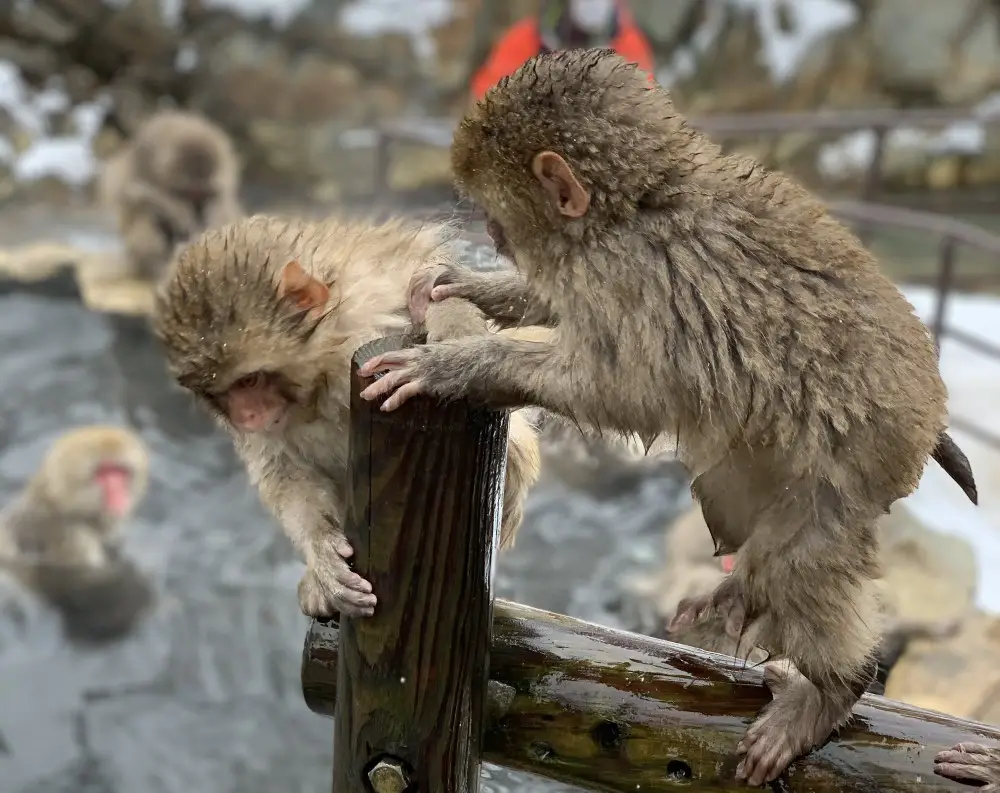
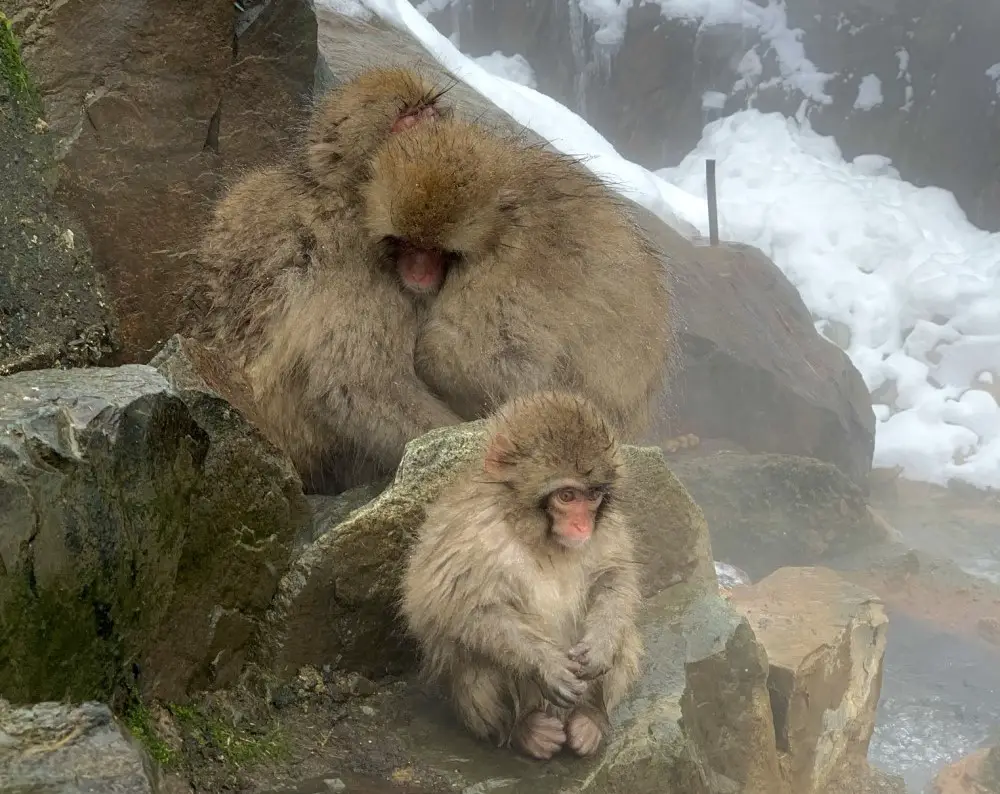
You will probably be able to witness the monkeys perform their usual hygienic routine – picking at their own fur or grooming others. Apparently it helps them to bond and reflects the status within the troop. To sum up, most monkeys just take different forms of chilling.
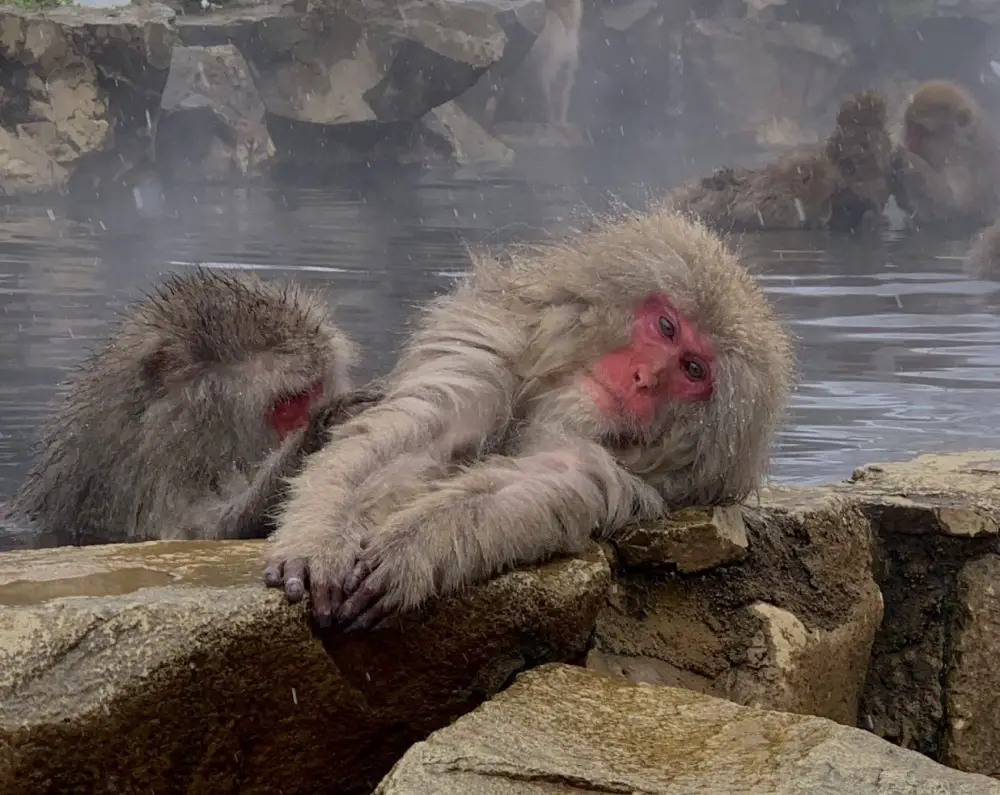
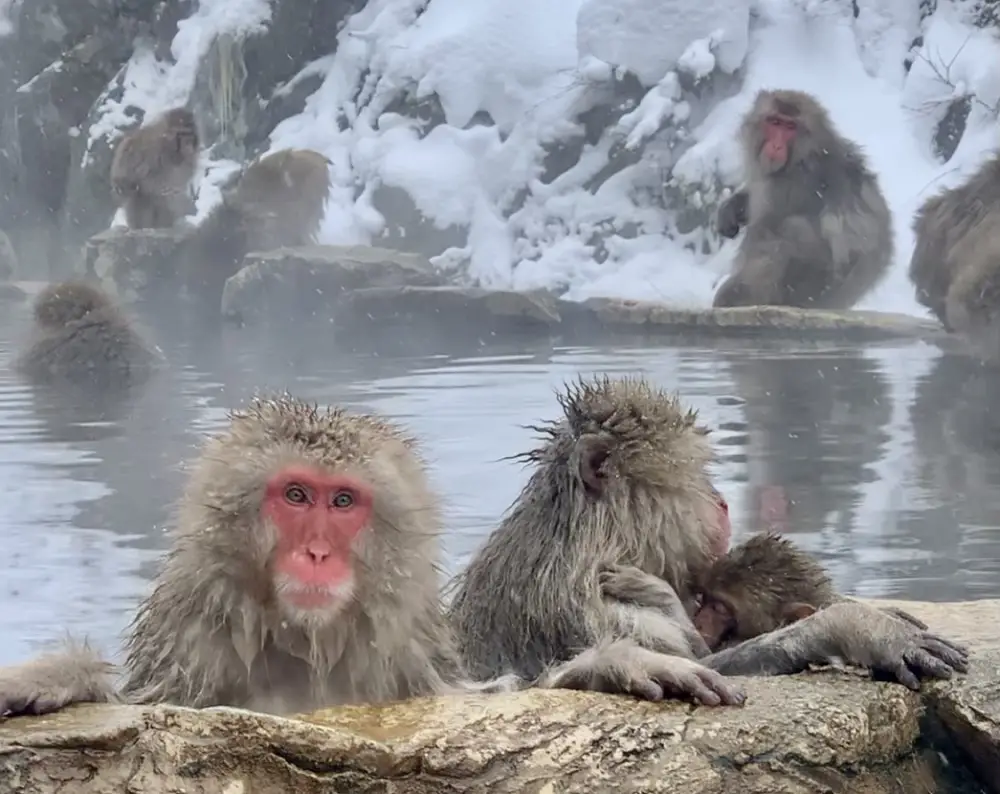
Ignoring the people
Despite being surrounded by crowds of noisy humans with annoying cameras and bling-bling outfits, the monkeys couldn’t be less bothered, which was so impressive!
They neither attacked nor even looked at people. They didn’t care about the crowd and ignored the people around. They had a good time while soaking in a hot relaxing bath. In brief, the snow monkeys from Nagano are very laid-back and well-mannered. Who would have thought that I would ever say that – it was actually nice to be in their company. 🙂
Where is the Snow Monkey Park?
The Jigokudani Monkey Park, popularly known as the Snow Monkey Park is located in the natural habitat of the Japanese macaques – in the Jigokudani valley in Yamanouchi in the Japanese Alps in Nagano prefecture, not far from the onsen towns of Shibu and Yudanaka.
Jigokudani means “Hell’s Valley”.
This not very inviting name derives from the widespread geothermal activity in the area. Many sources are now tapped for the use of the bath water. But in the past, the entire valley was filled with rumbling sounds, clouds of steam and whiffs of sulfur. Undoubtedly, it must have been like hell. When visiting the Snow Monkey Park, you will have a chance to see a geyser, a rare geothermal phenomena, located by the riverbed in front of the historic inn. Unlike most geysers, which erupt only at certain intervals, it emits a continuous plume of 90 degrees Celsius water reaching sometimes 20 meters in height! It’s unbelievable – it never stops!
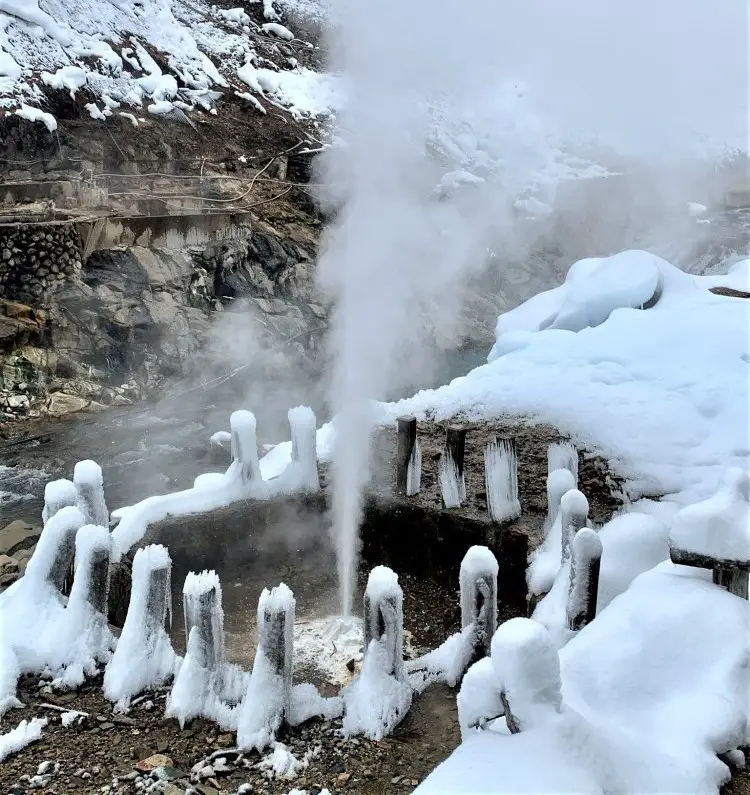
How to get to the Snow Monkey Park?
The train journey from Tokyo looks as follows:
- Tokyo Station – Nagano: 90 minutes by shinkansen;
- Nagano – Yudanaka: 50 minutes by train (Nagano Dentetsu Line last stop);
- Yudanaka – the Snow Monkey Park bus stop: 10 minutes by public bus;
- the Snow Monkey Park bus stop – the monkeys’ famous hot spring: 50 minutes on foot through the beautiful forest, which is very enjoyable.
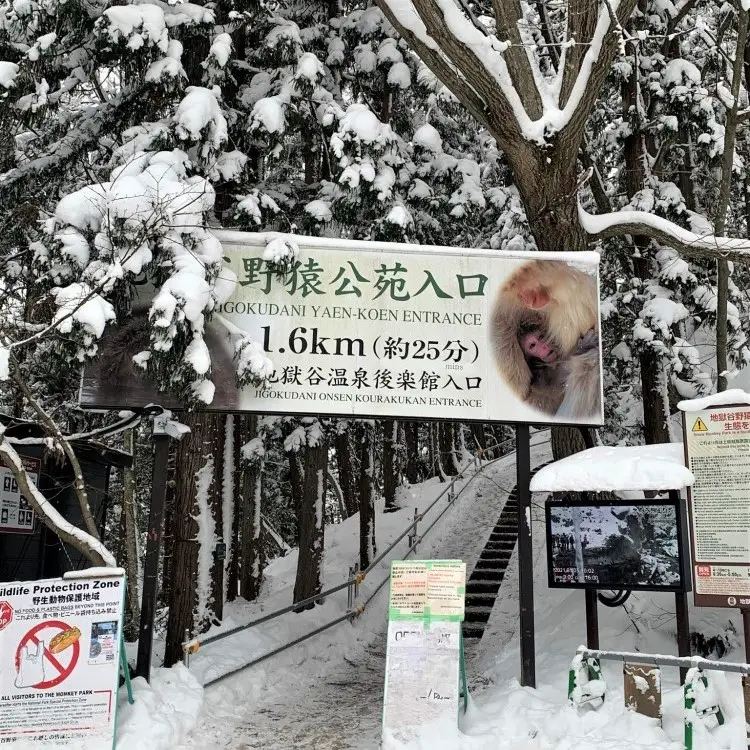
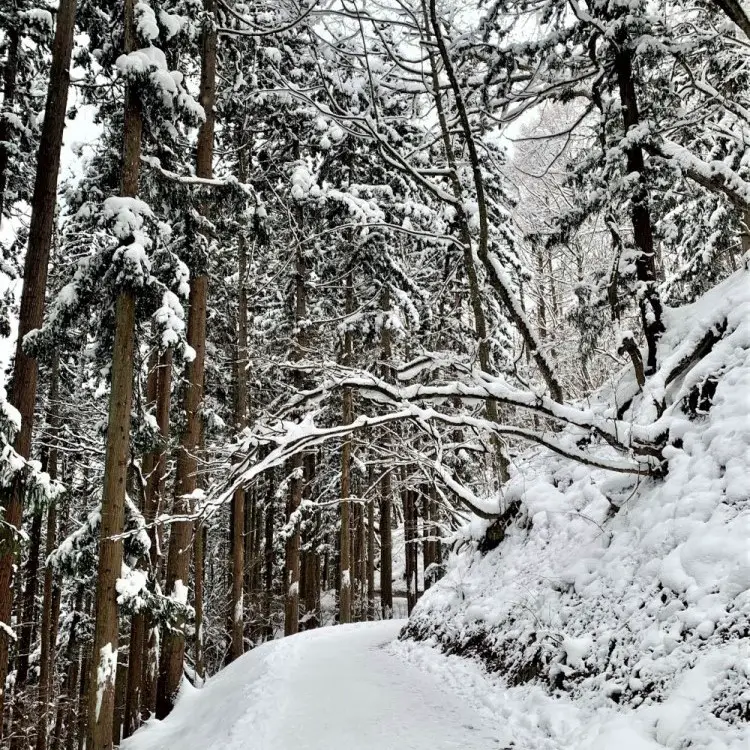
Getting to the Snow Monkey Park might sound complicated, but believe me, it’s not.
Travelling by trains in Japan is always very easy and enjoyable.
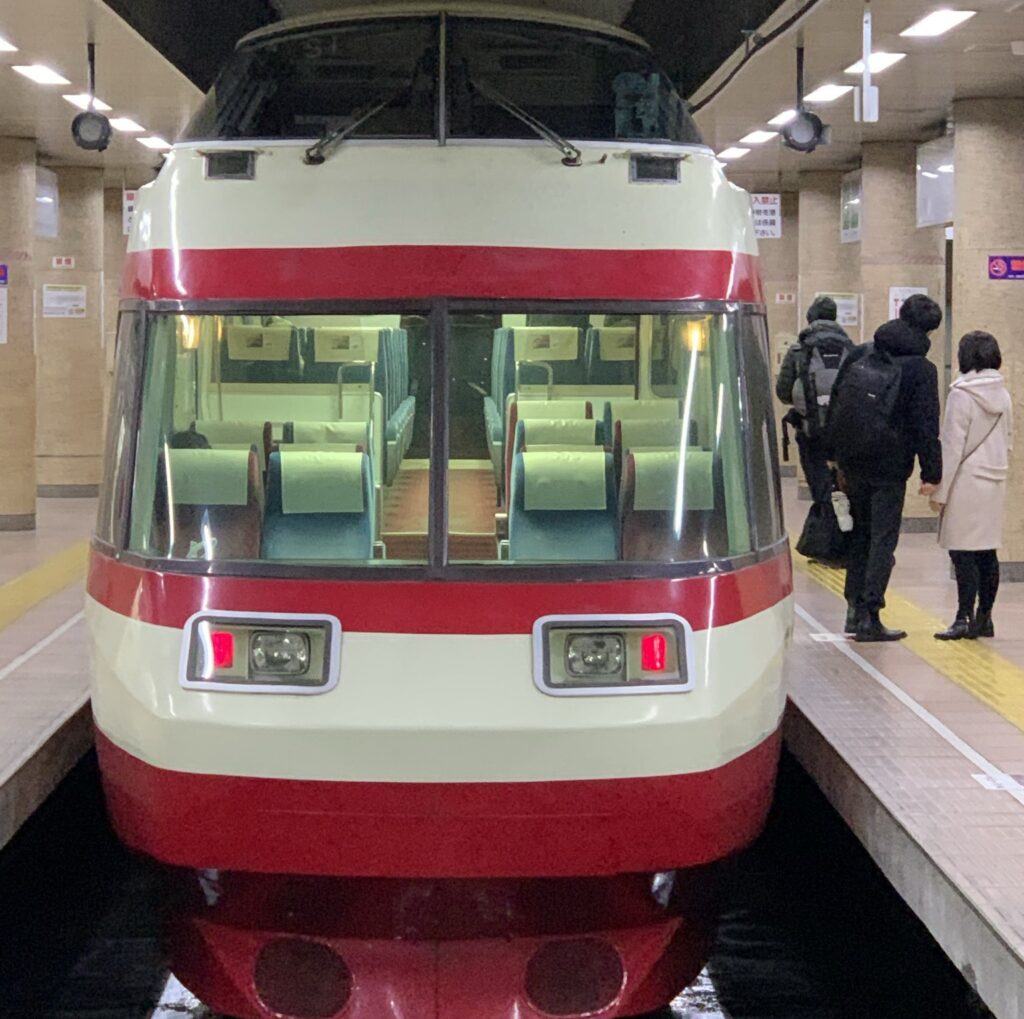
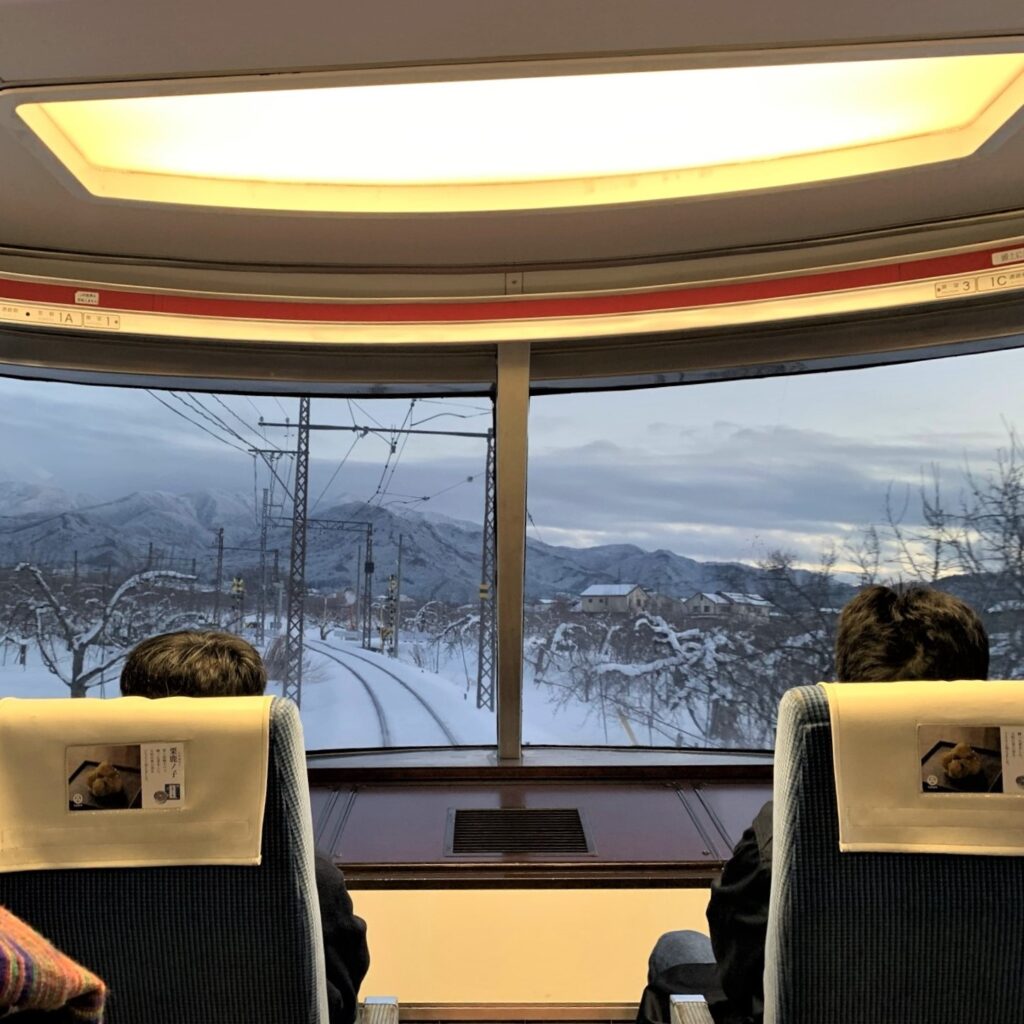
There is also a direct bus from Nagano to the Snow Monkey Park bus stop. And anyway, it’s totally worth any hassle. Where else on Earth you can see wild monkeys soaking in the hot springs?
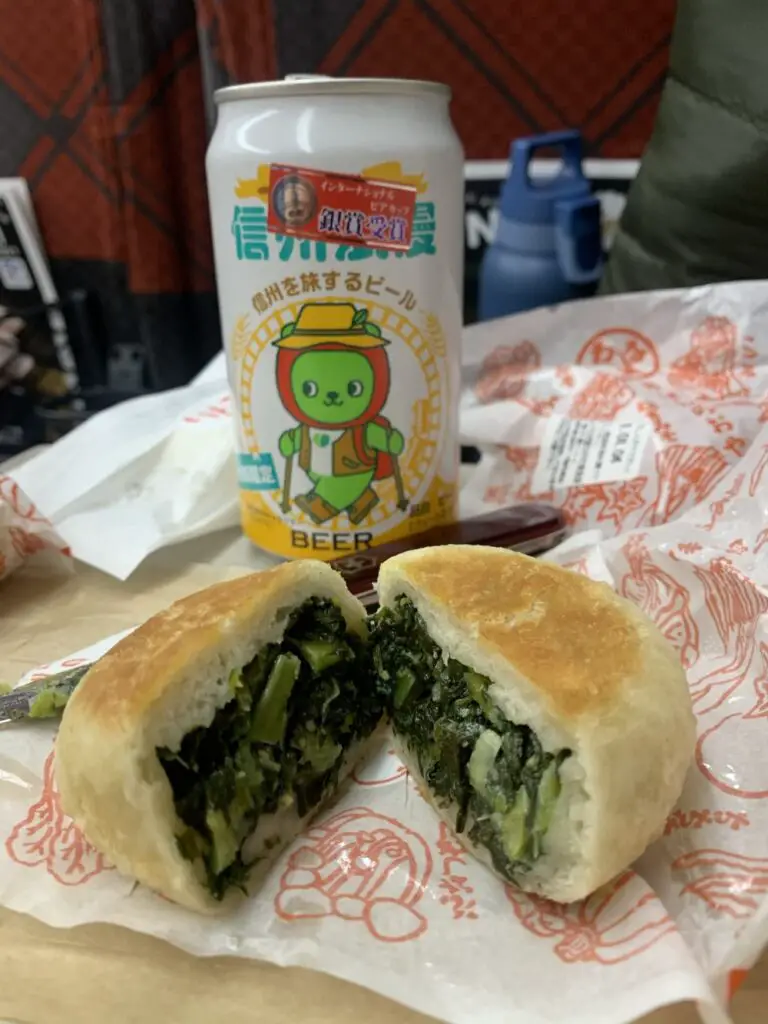
it’s the journey not the destination that matters, isn’t?
Where to stay?
Well, it depends what a big monkey fan you are. 🙂
Jigokudani Onsen Korakukan
If you not only want to experience watching the snow monkeys in hot springs, but also spend some real “quality time” together, you might want to stay at the historical ryokan. The Jigokudani Onsen Korakukan, which is the closest place to the monkey’s hot springs, is still open for the visitors. In fact, at this hotel you will spot the macaques quite often. You will probably observe them from your room window walking around the property. What’s more, some of the hotel guests claim that soaking in the outdoor onsen together with the monkeys is something very unique. I bet it is! Despite having their own bath, they still seem to be attracted to the historical inn. This ryokan has a very good rating on Booking.com, so you might want to give it a try. Check it out HERE.
Shibu Onsen
If you are an average monkey lover, I would recommend nearby Shibu Onsen. It is a very picturesque little town, where you can still feel the traditional atmosphere of old Japan. It is famous not only for being located very close to the Snow Monkey Park, but also for its nine public bath houses. The visitors of the town are invited to stroll around the narrow streets wearing traditional onsen clothing – yukata and wooden sandals. It’s a truly Japanese experience, undoubtedly very interesting to try or at least to see. Access to the hot springs is free as long as you are staying in one of the Shibu Onsen ryokans.
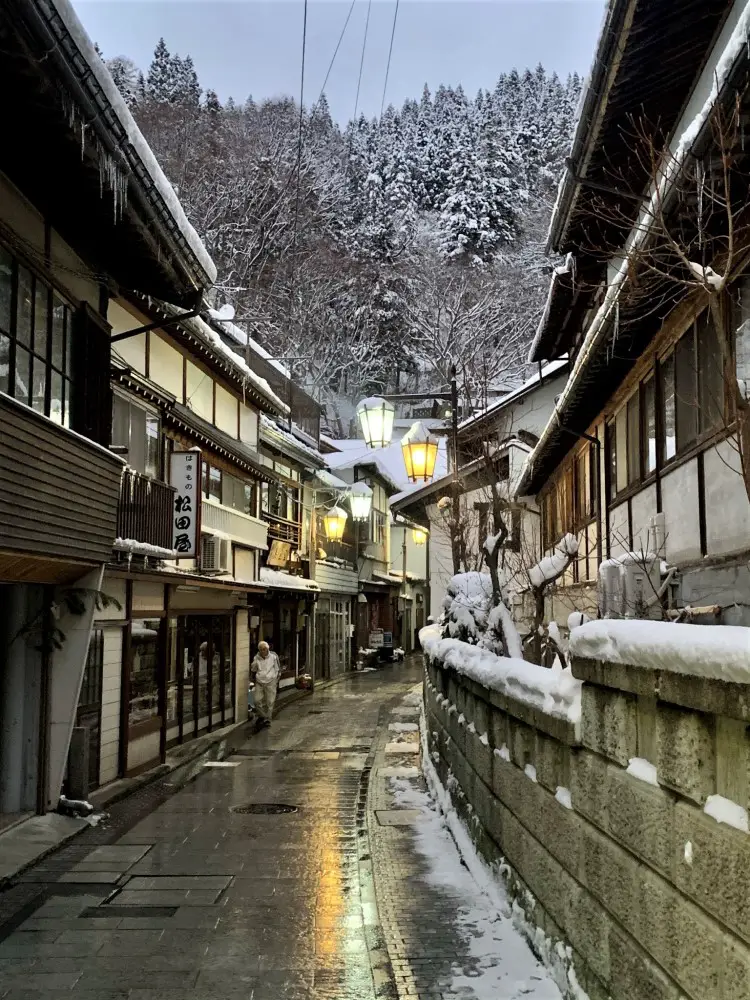
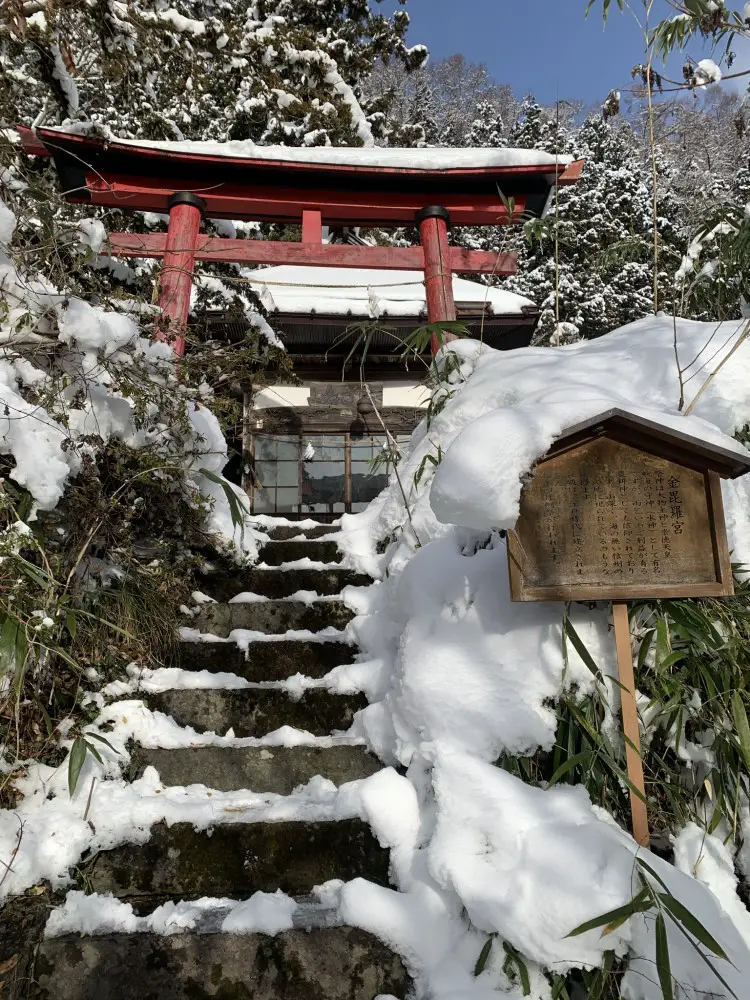
Koishiya Ryokan
Koishiya Ryokan is a traditional Japanese guest house where I’ve stayed when visiting the Snow Monkey Park and I can recommend with all my heart . First of all, its location is superb as it is situated in the heart of the old town. Secondly, it provides a free shuttle to the entrance of the Snow Monkey Park (5-10 minutes). Although I could have taken a public bus, I decided to walk back to the ryokan, which was a pleasant 30 minute downhill stroll. Thirdly, the staff is very friendly and, more importantly, speak good English. Lastly, traditional Japanese rooms with tatami and futons are spacious and nicely decorated while the restaurant serves good food, coffee and local beer. What else do you need? Check the details HERE.
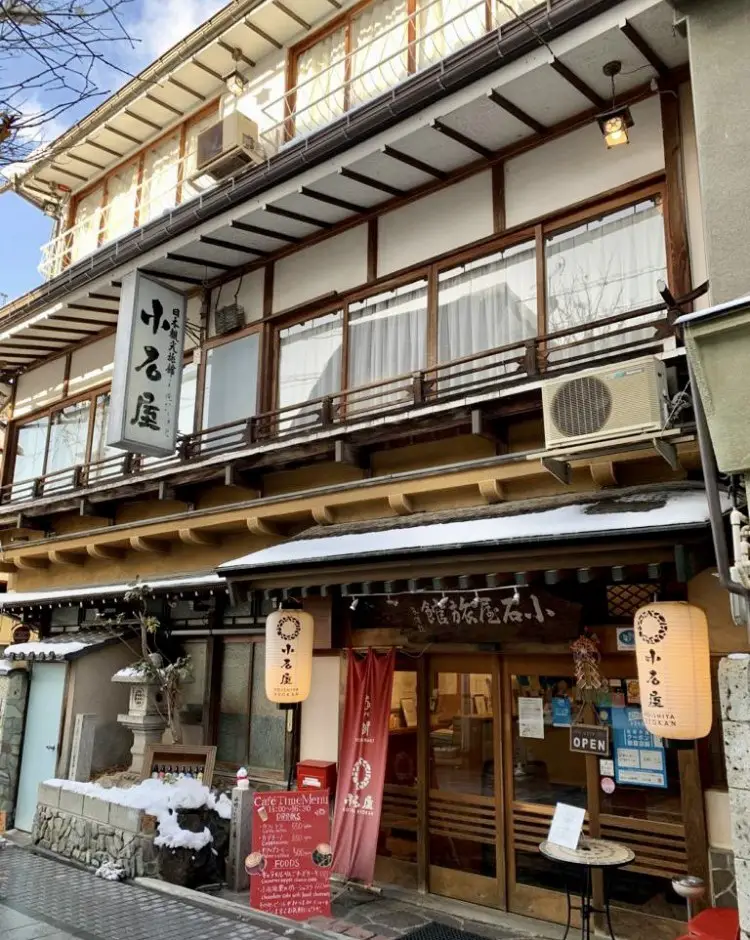

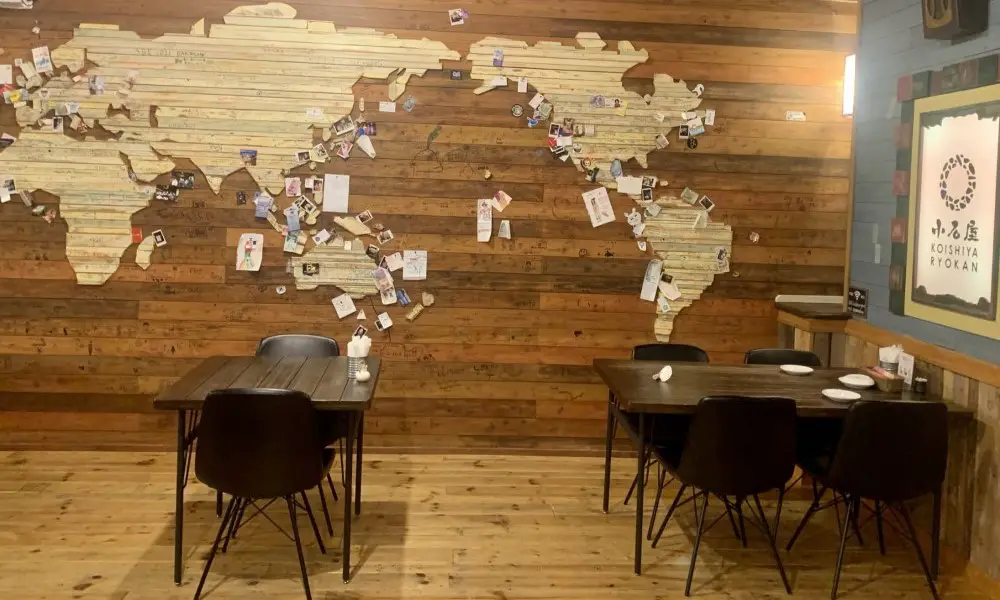
Yudanaka town
Alternatively, you can stay in a more modern Yudanaka town, which is where the train from Nagano stops. I’ve chosen Shibu Onsen as I always prefer historic over modern places.
Best time to visit the Snow Monkey Park
The Snow Monkey Park is open all year round. Winter (December – March) is the best time to visit the park as macaques covered in snow are considered the most photogenic and gather more often in the hot springs due to cold weather. In fact, I quite enjoyed observing snow monkeys in the snow. However, don’t worry if you can’t visit the park in winter. Seeing wild monkeys enjoying the hot springs is such a unique experience, that it will be certainly very enjoyable any time of the year. It’s the hot springs that make it so special, not the snow.
The park is open everyday from 9 am to 4 pm in winter (November-March) and a bit longer from 8.30 am to 5 pm in summer (April-October). You might not be allowed to enter 30 minute before the closure. There are no closing days throughout the year.
Admission fee: adults: ¥800, children: ¥400.


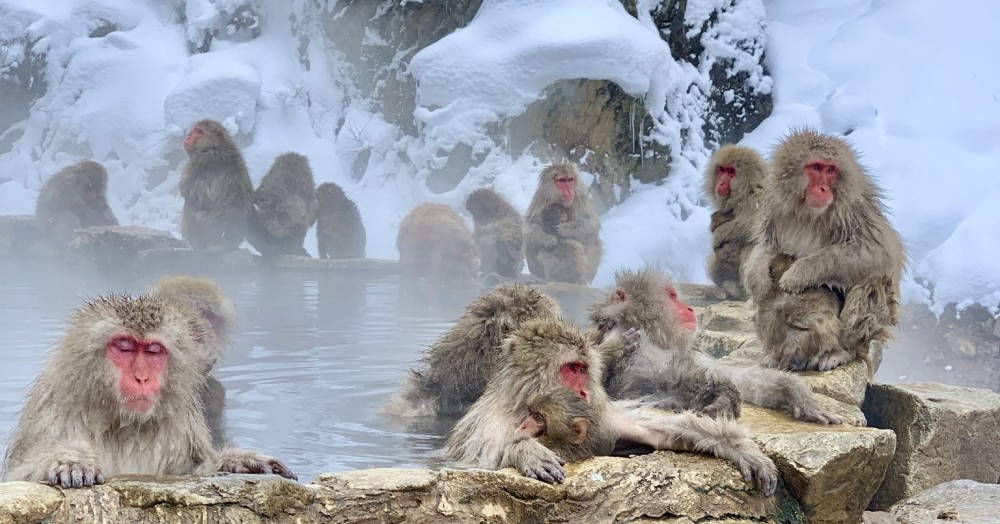
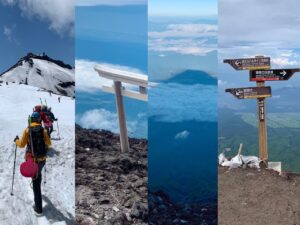
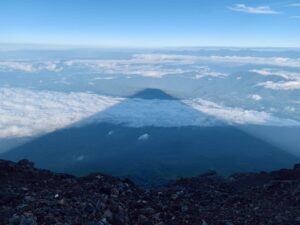
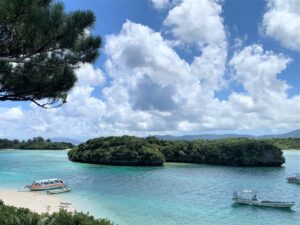
I could watch those monkeys for hours!!! They live a good life 😀